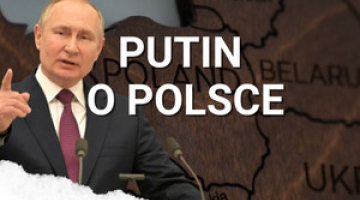Russia moves to cut off Ukrainian logistics in the Donbas. Day 1021 of the war


Russian forces have severed the road leading south from Pokrovsk over a stretch of more than 4 km and have at least partially captured the key villages of Novotroitske and Shevchenko. As a result, the defending Ukrainian units in the areas of Kurakhove and Velyka Novosilka can now only be resupplied through local routes from the Dnipropetrovsk and Zaporizhzhia Oblasts. Russian forces continue to advance towards the roads leading west from Pokrovsk, with only 5 km remaining to the nearest one.
Russian forces have cut the last supply line of the Ukrainian grouping south of Kurakhove. Communication between this town and the key Ukrainian-held village of Uspenivka can now only be maintained via dirt roads. The potential evacuation corridor from the salient east of Uspenivka has narrowed to 2 km, effectively leaving the remaining troops in a state of operational encirclement. According to various sources, Ukrainian forces remain in control of between one and three villages in the area.
A Ukrainian counterattack has pushed Russian troops out of Novyi Komar, a village north of Velyka Novosilka, restoring the supply route from the Dnipropetrovsk Oblast. However, it remains under Russian fire, while the route to the Zaporizhzhia Oblast provides a relatively safe alternative. Russian forces have approached Velyka Novosilka from the south, seizing another part of the territory that the Ukrainian military recaptured during its offensive in the summer of 2023. They have also expanded their control along the border between the Donetsk and Zaporizhzhia Oblasts, advancing towards this town from the southwest.
Russian forces have also made gains in Toretsk, Chasiv Yar and the Kupiansk area, but these have not changed the overall situation in any significant way. Russian forces have been advancing south from Sudzha, a Ukrainian-held town in the Kursk Oblast, capturing the key village of Plekhovo. By widening their area of attack, they have entered the Sumy Oblast; the Ukrainian government has denied this, despite consistent reports from observers on both sides. Moreover, Russian troops have regained more territory in the western part of the Ukrainian thrust.

Russia continued its targeted airstrikes against Ukrainian energy infrastructure and the rear. Infrastructure was damaged in the Kyiv Oblast (5 December), Zaporizhzhia (6 December, where guided bombs killed 10 civilians and injured 27) and the Donetsk Oblast (9 December), where a thermal power plant near Sloviansk was hit. In addition, Russian missiles struck cities including Kryvyi Rih (6 December) and Sumy (7 December). Between the evening of 3 December and 9 December, Russia reportedly deployed 272 attack drones and 15 missiles. Ukraine claimed to have shot down 144 drones and four missiles, while 116 drones were classified as lost without confirmed interception. By midday on 10 December, Ukrainian command had not issued any statement regarding Russian attacks during the previous night or in the morning. However, local sources reported a missile strike in the Kharkiv Oblast.

In the early hours of 6 December, Ukrainian forces launched another attack in the vicinity of the Crimean Bridge. Three days later, the Security Service of Ukraine (SBU) announced that during the operation, a group of Ukrainian Sea Baby naval drones engaged Russian helicopters, aircraft and patrol boats near Kerch. According to the SBU, the Sea Baby drones, armed with heavy machine guns, damaged Russian helicopters, killing and injuring their crew members. Russian media reported Ukrainian drone attacks on Grozny in Chechnya (4 December), Maykop in Adygea (7 December) and an airfield in the Saratov Oblast (10 December).

On 8 December, the United States announced a military aid package worth $988 million for Ukraine under the Ukraine Security Assistance Initiative (USAI), the 22nd package funded through this facility. It will cover the US defence industry’s costs of producing additional ammunition for HIMARS systems and drones as well as equipment and spare parts for tanks, armoured fighting vehicles and artillery that have been previously supplied to Ukraine. On 5 December, Finland announced a new package of military support for Ukraine; Bulgaria took a similar step on 3 December. Details of the assistance from both countries were not disclosed.
US company SpaceX has reached an agreement with the Pentagon on expanding Ukraine's access to the Starshield satellite communication system, Bloomberg reported on 6 December. An additional 2,500 terminals used by the Ukrainian military are set to be connected to Starshield, the military version of the Starlink system. Until now, Ukraine has been using 500 such devices.
Sweden and Denmark have signed a contract for 205 CV9035 MkIIIC infantry fighting vehicles (IFVs), 40 of which will be delivered to Ukraine, the Swedish government announced on 6 December. This fulfils earlier commitments by both countries; production costs will be covered with funds they have already allocated for military assistance to Ukraine. In 2023, Ukraine received 50 older CV90 IFVs from the Swedish Army’s stocks. The government in Kyiv has also announced it selected the CV90 as the primary infantry fighting vehicle of the Armed Forces of Ukraine. France and Denmark will accelerate the delivery of additional CAESAR self-propelled howitzers for the Ukrainian army by one year, moving the timeline forward from 2026, the Danish Ministry of Defence announced on 9 December.
Thirty-five Ukrainian sailors have completed a two-month training programme aboard the minehunter Makkum, the Dutch Ministry of Defence announced on 4 December. A Ukrainian crew is also being assembled for its sister ship, the Vlaardingen. Last March, the Netherlands announced its intention to transfer two decommissioned Alkmaar-class vessels to Ukraine. At the same time, Belgium pledged to provide a third vessel of this type; Ukrainian personnel is currently training at the Belgian Navy Academy. Along with two Sandown-class minehunters delivered by the United Kingdom last April, these vessels are set to form the core of the future Ukrainian Navy’s mine countermeasure forces. Crewed by Ukrainian sailors, these ships remain in Western ports and will only move to the Black Sea after the end of hostilities.
On 9 December, Matthew Miller, a spokesperson for the US State Department, stated that if Ukraine lowers its mobilisation age from 25 to 18, the United States and other partners will train and equip the newly conscripted soldiers. The Biden administration has reportedly been increasing pressure on this issue for several months, but this was the first time it was publicly expressed by a government official. President Volodymyr Zelensky responded to Miller’s remarks, reiterating his opposition to lowering the mobilisation age. He also renewed his appeal for the West to speed up arms deliveries and curtail Russia’s military capabilities.

On 3 December, the chairman of the national security commission in Belarusian ‘parliament’, Henadz Lapeszka, announced plans to establish joint Russian-Belarusian military training centres in the Grodno Oblast, Kaliningrad and Nizhny Novgorod. Lapeszka’s remarks have revealed that despite earlier announcements (a relevant agreement was signed in March 2023), no progress has been made on setting up such centres.
On 6 December, the leaders of Belarus and Russia met in Minsk to sign an agreement on security guarantees (see ‘Security above all: A revised Belarus–Russia alliance’). The document reaffirms their strategic military alliance and commits both parties to provide mutual assistance, using all available means and resources, in the event of a security threat to either signatory. However, the agreement does not qualitatively alter the existing framework of cooperation between Belarus and Russia in this area. Belarusian territory has long been, and remains, part of Russia's security space where the Russian military enjoys unrestricted access.

On 4 December, Defence Minister Rustem Umerov signed an order establishing the position of a procurement officer in each brigade of the Armed Forces of Ukraine. These officers will be responsible for planning and organising purchases, preparing tender documentation, analysing markets, identifying suppliers and selecting/evaluating offers, excluding arms procurement. According to Umerov, this measure aims to ensure that supplies better reflect the actual needs of soldiers. Following a previous requirement for each brigade to establish its own military commission, this is the latest administrative decision that exposes the inefficiency of the defence ministry’s structures in charge of the mobilisation policy and military supplies. The ‘State Rear Operator’ agency is responsible for procuring food, uniforms and other supplies.
he following day, the minister asserted that the armed forces would receive over 30,000 long-range assault drones in 2025. This year, the Defence Procurement Agency has signed contracts and made advance payments totalling 20 billion hryvnias (c. $500 million) for the purchase of ‘deep strike’ unmanned aerial vehicles.
On 5 December, the Ukrainian Prosecutor General’s Office announced that more than 8,000 men had voluntarily returned to service after a law came into force in late November easing criminal liability for soldiers who left their military units without authorisation for the first time. The amended regulations, which act as a one-off amnesty, will remain in effect until 1 January 2025. On 6 December, citing data from the Prosecutor General’s Office, Bloomberg reported that since 2022, 96,000 criminal cases had been initiated against servicemen who left their units. The majority of these cases were launched this year, highlighting the growing physical and psychological exhaustion among military personnel.
On 8 December, President Zelensky announced that 43,000 Ukrainian soldiers have been killed while 370,000 have suffered various injuries during the ongoing Russian invasion. He emphasised that nearly half of the wounded have returned to the battlefield after recovery. He also reported Russian losses of around 198,000 killed and over 550,000 injured. The president’s remarks came in response to Western media reports claiming that Ukrainian casualties range between 60,000 and 100,000 killed.






